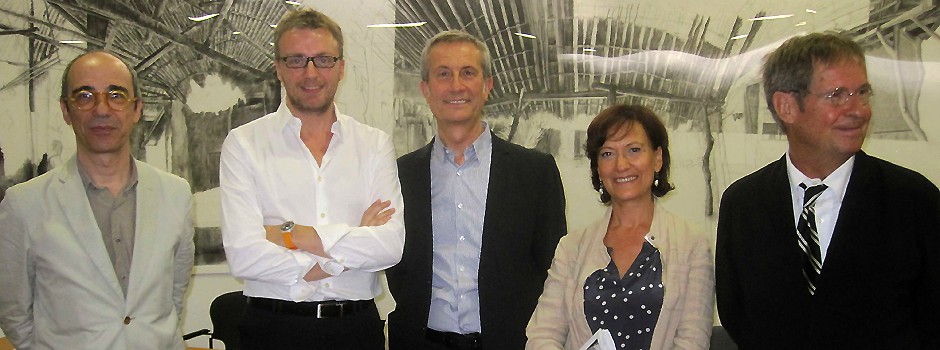This is the dissertation of Alessandro Scarnato for his PhD title, in ESTAB school of architecture of Barcelona. Juanjo Lahuerta, ETSAB (left), Paola Di Biagi, IUAV (right) and Joan Busquets, Harvard (right edge) have been the members of the jury who gave the maximum evaluation, «cum laude» to the research led by Alessandro Scarnato under the supervision of Antonio Pizza, ETSAB (in the center).
The research deals with the historic center of Barcelona between 1979 and 2011. The period is marked by a continuity of government unique in democratic systems, which has allowed the development of almost complete administrative, urban and cultural processes.
The experience of Barcelona has been extensively studied and celebrated. Now, with the period of social democrat administration came to an end and architectural criticism more open to accommodate more scientific readings of that experience, the thesis approaches to the Barcelona Model through the study of the regeneration of Ciutat Vella (the historic center of Barcelona).
The reasons for this choice are the crucial role of historical centers in European cities and in the peculiarities of the Barcelona process. The study also deals with the interaction between architecture and politics with respect to management and transformation of the urban reality, taking into account how economic and political globalization, on the one hand, and cultural and technological evolution, on the other hand, have changed the scenery of urban and architectural planning in recent years.
The first part is an introduction and gives the coordinates in terms of edition and historic bases indispensable for understanding the thesis. In the second part, the research overviews thirty two years of planning and interventions in Ciutat Vella in a detailed explanation supported by data, documents and experiences.
The period 1979-2011 is divided into four stages, treated in four sections: during the 1979-1986 stage, architects and politicians work together to fill the basic urban needs; from 1987 to 1996, the new administrative tools and Olympic success impart a strong acceleration to the renewal; from 1997 to 2004, the transformations reach their acme, thus raising protests and hopes; in the last step 2005-2011 , the architecture focuses on specific problems while the visionary policy fades.
Eight case studies are considered to be representative of broader issues discussed in the text: gardens Emili Vendrell; square Mercè; Fossar de les Moreres; Rambla del Raval; residences of so-called Porta Cambo; square of the Vila de Madrid; square George Orwell; Carrer Joaquín Costa.
The third and final part of the work (that of the apparatuses), contains a bibliography and a list of media sources. In this part there are also three interviews with key people in the transformation process described: novelist Manuel Vázquez Montalbán (met in 2001); former major Joan Clos; architect and politician Itziar González.
The thesis takes the transformation of Ciutal Vella during the thirty years of socialist administration as a base to start a broader discussion about the relationship between architecture (cultural and technicalwise), historic city (as a physical and social multi-layered reality) and politics (considered as a combination of program, strategy and management) as a key to understanding the meaning of the contribution that architecture can make to the improvement of the city and society in the new global realities.
Thesis, in the process of publication, is accessible here:





